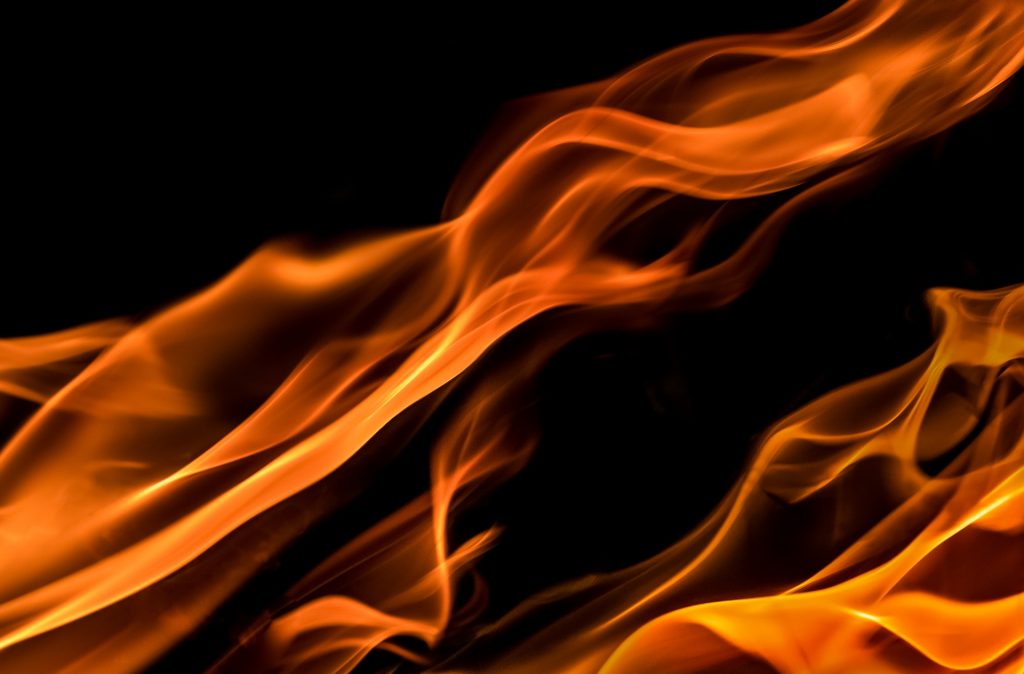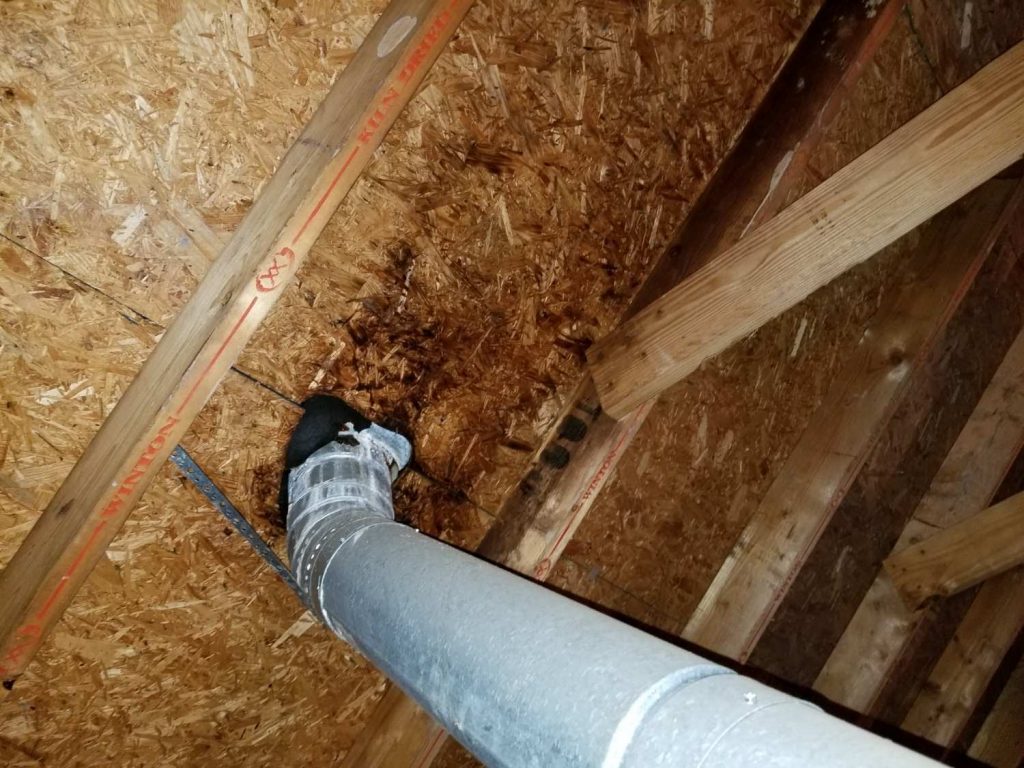In our homes, it’s important to maintain proper clearance between things that are flammable (like most of the materials that our houses are built of) and things that can get hot enough to cause these materials to catch on fire.

Some of the most common items in our homes that have the possibility to cause flammable materials to catch on fire are the vent pipes from standard heaters and water heaters and the chimneys from a fireplace or wood burning stove.
While each manufacturer has their own requirements for clearance from combustible materials, there are some standard measurements that are used throughout the industries.
Vent pipes for heaters and water heaters, typically termed B-vent, must be kept at least 1″ away from combustible materials. Typical flammable materials that can come in contact with these B-vents include wood (from house framing or roof decking), paper backing on insulation and spray foam insulation.
Chimney pipes are typically required to be kept a minimum of 2″ away from flammable materials. Most chimney pipes must also be kept away from all insulation materials, including fiberglass.

When we discover issues with vent pipe clearances on a home inspection, we typically advise our clients of the following:
Inadequate vent pipe clearance is noted. Combustible materials are nearby/touching the vent pipe/chimney. A 1″ clearance is typically required for B-vent pipe installation. A 2″ clearance is typically required for chimney installations. Correction of this item is recommended. Recommend evaluation by a qualified tradesperson and repair or replace as needed.
